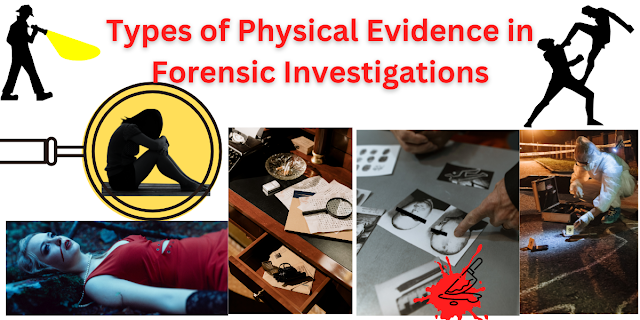Introduction:
Tables are a valuable and efficient way to
present organized information in a structured format. They provide a clear and
concise overview of complex data, making it easier for readers to grasp the key
points at a glance. In various fields, including forensic investigations,
tables are used to summarize different types of physical evidence associated
with specific offences.
In the context of forensic science, the table content lists various offences and the corresponding types of physical evidence commonly found at crime scenes. This information helps investigators, law enforcement, and forensic experts understand what evidence to look for in each scenario. It serves as a reference guide, ensuring that crucial evidence is not overlooked during the examination process.
Moreover, the use of tables streamlines communication and facilitates knowledge sharing among professionals in the forensic community. By presenting essential data concisely, tables promote efficient decision-making, aid in the classification of evidence, and enhance collaboration among experts involved in criminal investigations. Overall, tables play a vital role in simplifying complex information and contributing to the effectiveness of forensic investigations.
Here is the table with brief descriptions of the offences and the types of physical evidence associated with each:
|
S. No |
Type of Offence |
Types of Physical Evidence |
|
1. |
Dacoity / Robbery |
Blood stains, footprints, fingerprints, used weapons,
tyre marks of the vehicle, articles/implements left behind by the offenders. |
|
2. |
Dacoity (Involving Firearms / Explosives) |
In addition to the above: firearms, parts of firearms,
cartridge cases, bullets, pellets/wads, clothes affected by firing, close
range firing effects such as scorching, blackening, tattooing, entry and exit
wounds. Explosives and remnants such as metallic balls, stones, nails (used
as missiles), residues, components, unexploded explosives/bombs, etc. |
|
3. |
Homicide Cases |
Blood stains, blood swabs, saliva, other body fluids,
skin tissues, weapons used, footprints, fingerprints, glass pieces,
fragments, tyre marks, tool marks, poisonous substances, drugs, intoxicating
substances like alcohol, sedatives, barbiturates, etc. |
|
4. |
Rape and Murder |
Liquid blood, blood stains and swabs, semen, seminal
stains and swabs, saliva, other body fluids, skin tissues, struggle marks,
bite marks, nail marks, nail clippings, hair, fibre, clothing of victim and
culprit, personal belongings, bangle pieces, footprints, tyre marks, etc. |
|
5. |
House Burglary/ Thefts / Robbery |
Fingerprints, footprints, tool marks, tools/implements,
articles left behind by the culprits, glass pieces, fragments, paint, tyre
marks, etc. |
|
6. |
Suicides |
a. Hanging: Knot, saliva, semen, other body fluids,
etc. b. Drowning: Diatoms, plant material like leaves, weeds, etc. c.
Burning: Inflammable materials like petrol, diesel, kerosene, etc. d. Poison:
Poisonous substances, plant materials, food, syringes, needles, tablets,
powders, vomit, etc. |
|
7. |
Arson and Fire Accidents |
Inflammable materials such as petrol, diesel, kerosene,
arson, fire residues, unknown chemicals, etc. |
|
8. |
Acid Cases |
Acids, acid containers, skin tissues, cloth items,
acid-soaked soil, acid-burning residues, etc. |
|
9. |
White Collar Offences |
Suspected handwriting, signatures, initials, numerals,
erasures, obliterations, alterations, overwriting, secret writing, typewriting,
printed matter and photocopies, inks and paper, stamp impressions, Photostat,
fax and carbon copies, etc. |
|
10. |
Narcotic and Psychotropic Offences |
Suspected powders, liquids, plant products, suspected
toddy, liquor, components used for the preparation of adulterated toddy, liquor,
etc. |
|
11. |
Road Accidents |
Tyre marks, skid marks, debris, spilled load of the
vehicle, glass pieces and fragments, blood stains, paint flakes, chips and
smears, exchange of paint, body parts, tissues, cloth fibres, etc. |
|
12. |
Cyber Crimes |
Software, hardware, computer peripherals, storage
media, communication devices, voice files, image files, computer printouts. |
NOTE: Please note that the above table is intended for
informational purposes only and may not be exhaustive for each offence or
jurisdiction. Physical evidence collection and analysis may vary depending on
the specific circumstances and local regulations. It is crucial to involve
trained professionals such as forensic experts and law enforcement agencies in
handling and processing such evidence.




.webp)


.webp)
.webp)

.webp)


.webp)


.webp)
0 Comments
If you have any doubts, let me know.